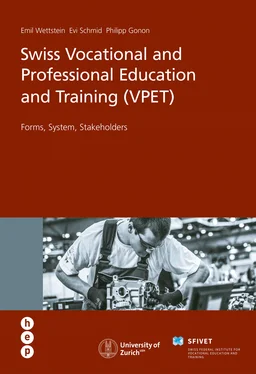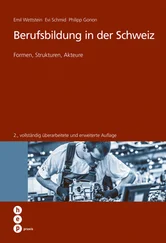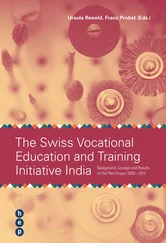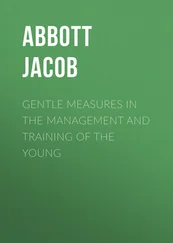Ausbildungsverbund OdA Gesundheit beider Basel
The Ausbildungsverbund OdA Gesundheit beider Basel (Professional Organisation for Health Care of Both Basel Cantons) undertakes tasks of host companies such as recruitment, corporate education planning and also human resource administration for the VET programmes Health Care Assistant (Fachfrau/Fachmann Gesundheit, FaGe) and Health and Social Care Worker (Assistent/in Gesundheit Soziales, AGS). This work is funded by training contributions of the members of between CHF 1,200 and CHF 2,200 per learner per month. The professional organisation is the apprenticeship contract partner and also pays the learners their learner’s salary. It supports and coaches the professionals at the companies (hospitals, nursing homes, etc.) in which the learners work productively for three to four days depending on the apprenticeship year (OdA Gesundheit beider Basel, 2013).
PORTRAIT OF CAGDAS GUERAKAR
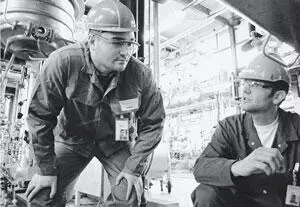
Cagdas Guerakar, 21,
is learning to become a Chemical and Pharmaceutical Technician, Federal VET Diploma
clear
Like with King Thrushbeard
Cagdas Guerakar is being trained as a Chemical and Pharmaceutical Technician, Federal VET Diploma (Chemie- und Pharmatechnologe EFZ) and is in his second apprenticeship year. So far, it has been almost only in the “training pilot” (Lehrpilot) and in the school laboratories of aprentas that he has been given a practical insight into his profession.
His group is called CPT, CPT like “Chemical and Pharmaceutical Technology”. The members are all learners with whom Cagdas Guerakar is doing the VET programme. Nearly every day, the prospective chemical and pharmaceutical technicians send WhatsApp messages to each other, usually to ask comprehension questions on what they have learned and to give possible answers, and in some cases organisational information about lessons. “We all help each other,” says Cagdas Guerakar. “My class has become like a family for me.”
Cagdas Guerakar is in the second year of the three-year VET programme Chemical and Pharmaceutical Technician, Federal VET Diploma. Lessons at the vocational school and in its laboratories and also the courses in the “training pilot” have been the focus of his training so far. The laboratory courses and training pilot correspond with the branch courses but their scope goes well beyond the minimum requirements of the VET ordinance (Bildungsverordnung). “We are talking about practical training,” specifies Reto Fankhauser, Head of Production Training at aprentas. Fankhauser explains: “The first apprenticeship year essentially corresponds with a traineeship entry year, hardly anything is happening in the companies.” The second apprenticeship year is also mainly school-based: out of 47 working weeks, Cagdas Guerakar spends only around 17 weeks at his host company Novartis. The rest of the time he continues to spend on the school subjects which are important for his occupation, such as Technology, IT and English, as well as practical tasks in the school laboratory. The prospective chemical and pharmaceutical technician will not really knuckle down until the third apprenticeship year which, apart from seven weeks at school, he will spend entirely at Novartis. With the exception of the special project (Vertiefungsarbeit), he will by then already have completed the qualification procedure in instruction in Language, Communication and Society (LCS) (allgemeinbildender Unterricht, ABU).
Chemical and pharmaceutical technicians work in production and development companies of the chemical and pharmaceutical industry. They control systems – such as reaction vessels or reactors – with which drugs, phytopharmaceuticals or dyes are produced. In the three courses (a total of seven weeks) in the training pilot, Cagdas Guerakar learned how they are operated. The two-storey training hall is equipped with all important reactors and other systems for the likes of filtration, distillation and drying. Here, Cagdas Guerakar’s class practised dealing with parameters such as temperature, pressure, quantity and flow velocity – like in reality but without hazardous substances. This means the people in the class were able to comprehend and transfer to reality what they had learned at school.
The fact that knowledge acquired at school does not simply mean mere theory is something Cagdas Guerakar is also experiencing in vocational instruction. In the laboratory of the Ausbildungszentrum Schweizerhalle (Schweizerhalle Training Centre) Cagdas Guerakar and his class are currently examining various substances and carrying out ion detection. The young professional knows that CO 3 2-ions can be revealed by adding acid. “We have to understand connections like this, even if we are not working in a laboratory in our profession,” he says.
Cagdas Guerakar’s training is mainly provided by aprentas, a cooperative training association with currently 74 member companies. Overall, aprentas trains around 600 learners in 15 occupations and carries out continuing education and training programmes. Although Cagdas Guerakar has an apprenticeship contract with Novartis, so far he has nearly always had teachers and instructors from aprentas. It is like in the fairy tale of the omnipresent King Thrushbeard: the branch course in the training pilot, the vocational instruction in the Schweizerhalle Training Centre, even the Language, Communication and Society lessons in Muttenz are the responsibility of the cooperative training association. This training model with a relatively high school-based part was also developed by aprentas (based on earlier models from industrial chemistry).
The upper-secondary level in Switzerland is characterised by two large blocks: upper-secondary level baccalaureate schools and VET programmes. In between there are other education and training programmes and institutions, however, including commercial schools (Handelsmittelschulen), specialised schools (Fachmittelschulen), trade schools (Lehrwerkstätten, i.e. full-time vocational schools including work-based training and classroom instruction) and professional schools, (Fachschulen). Many of these are counted among the school-based VET programmes to distinguish them from combined school/work-based VET programmes (“company-based VET”).
According to Article 6 of the Vocational and Professional Education and Training Ordinance or VPETO (Berufsbildungsverordnung or BBV; VPETO, 2003), school-based VET is a “VET programme where most learning takes place at a school, namely a trade school or a commercial school” and which prepares people for a Federal VET Diploma (eidgenössisches Fähigkeitszeugnis or EFZ) or a Federal VET Certificate (eidgenössisches Berufsattest or EBA) (VPETO, 2003, Art. 6).
Combined school/work-based and school-based VET programmes cannot always be clearly distinguished from each other, however. The following characteristics are typical of school-based VET programmes (Wettstein & Amos, 2010):
•Responsibility for the training lies with the participating school, not with the company.
•The theoretical part of the content is often more comprehensive and is generally taught at a school.
•The learners receive a wage only during the traineeships, which are required for all school-based VET programmes. In the trade schools (full-time vocational schools, including work-based training and classroom instruction), a modest remuneration is sometimes paid. At privately funded schools, the learners have to pay school fees.
•The level of lump sums which the Confederation pays to the cantons is higher for school-based VET programmes than for combined school/work-based VET programmes (VPETO, 2003, Art. 62, cf. Chapter 2.6.1, p. 137).
Читать дальше
